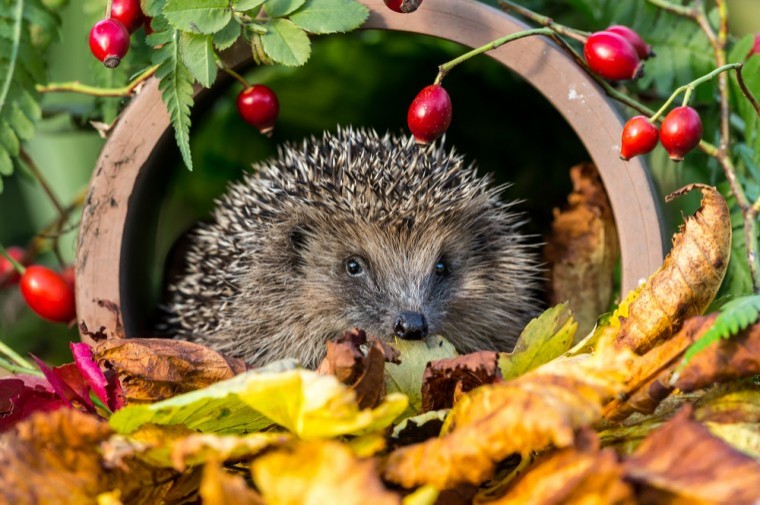Results from the first systematic survey of rural hedgehog populations in England and Wales using footprint tracking tunnels has been published in Scientific Reports.
The research, titled ‘Reduced occupancy of hedgehogs in rural England and Wales: the influence of habitat and an asymmetric intra-guild predator’, investigates the effects of the availability of key habitat types and badger (Meles meles) sett density on native hedgehogs (Erinaceus europaeus). The results show that while badger sett density is negatively correlated with hedgehog presence, there was evidence of both species co-existing and hedgehogs being positively associated with built habitat (e.g. houses). More worryingly, both hedgehogs and badger setts were not recorded at many of the sites surveyed, suggesting there is a much wider land management issue in our countryside affecting both species.
The research, led by Nottingham Trent University and the University of Reading, and funded by the People’s Trust for Endangered Species and the British Hedgehog Preservation Society, surveyed 261 rural sites covering all habitat types (seven land classes from arable farmland to upland sites) across England and Wales between 2014 and 2015 (18 sites in Wales, 243 in England) using footprint tracking tunnels. Many sites were surveyed by volunteers.
{in-brief}
Ben Williams, PhD student from the University of Reading, the primary author of this paper, explains: “We found that although hedgehogs were generally widely distributed across England and Wales, they were actually found at a worryingly low number (21%) of sites. We also found that hedgehogs were absent from 71% of sites that did not have badger setts either, indicating that both hedgehogs and badgers may be absent from large portions of rural England and Wales.”
“We found hedgehogs at 55 sites. We also found that badger setts were present at 49% of these sites, demonstrating that badgers and hedgehogs can, and do, coexist, as was the case historically for thousands of years prior to the recent decline in hedgehog numbers. However, perhaps more importantly our results indicate that a large proportion of rural England and Wales is potentially unsuitable for both hedgehogs and badgers to live in. Given the similarity in diets of the two species, one explanation for this could be the reduced availability of macro-invertebrate prey (such as earthworms) which both species need to feed on to survive. This could be as a result of agricultural intensification and climate change.”
While the results don’t dispute that high numbers of badgers in some places do have a negative impact on the presence of hedgehogs, crucially, neither hedgehogs nor badger setts were present at 70 sites (27%), meaning that at over a quarter of the study sites the landscape was apparently unsuitable for either species. This would imply a wider landscape management issue affecting both species, rather than a single factor being the cause of the well-documented hedgehog decline.
Nida Al-Fulaij, grants manager at PTES expands: “Badgers are what’s known as ‘intra-guild predators’, meaning they predate hedgehogs but also compete with them for food resources. This naturally makes their relationship complex, which we already knew, but until now we didn’t realise the extent to which changes in the landscape were affecting both species”.
Ben further elaborates: “The results also indicate that hedgehogs may be using areas of human habitation as a sort of “refuge habitat”. This was evident across all scales (from small villages to cities), becoming more pronounced with greater urbanisation. Residential gardens potentially offer a number of advantages for hedgehogs and enable them to escape some of the problems associated with the rural landscape. Therefore, houses, villages and towns bordering more rural landscapes are important areas for hedgehogs and may become increasingly so if we continue to see the rate of declines we are currently witnessing in rural Britain.”




